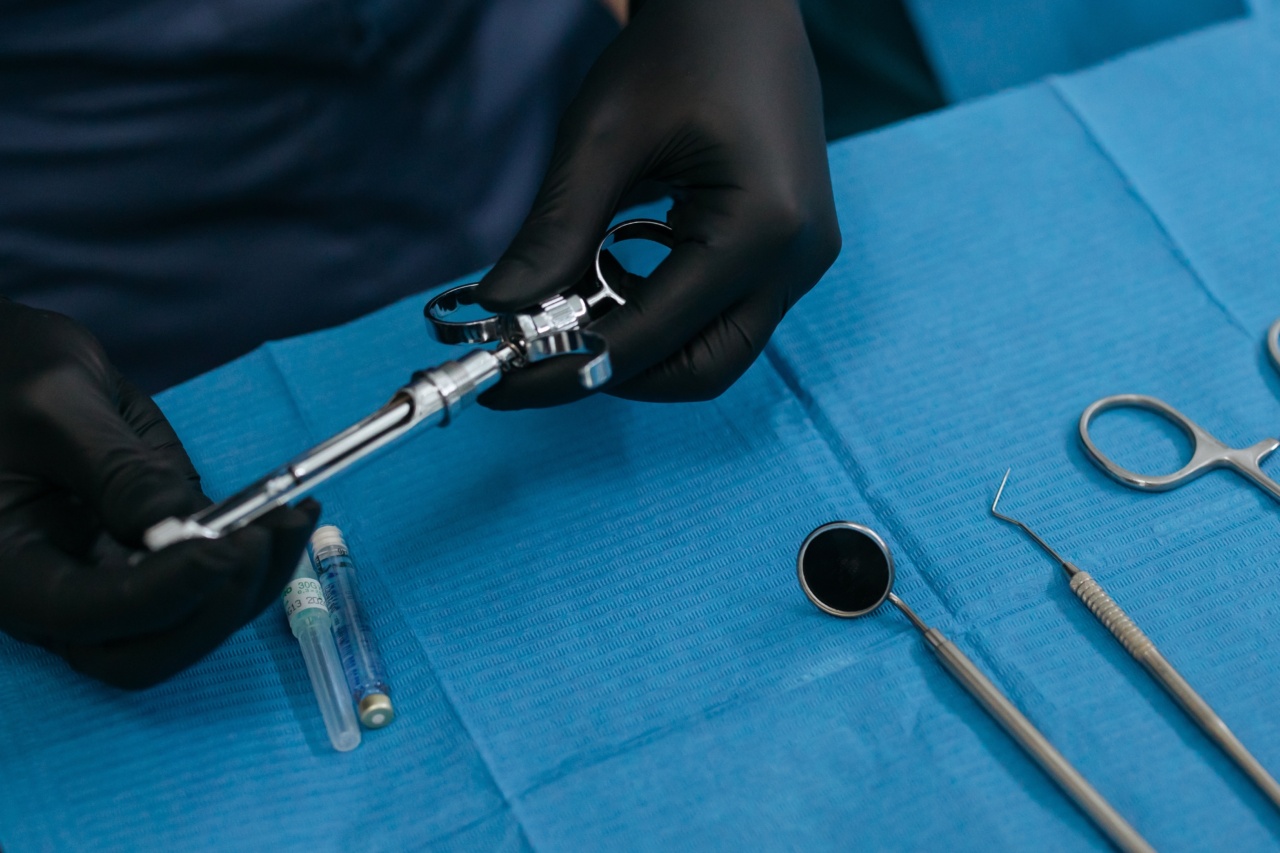Regional anesthesia is a type of anesthesia used to numb a specific area of the body, rather than putting the patient completely to sleep. There are several types of regional anesthesia, including epidurals, nerve blocks, and spinal anesthesia.
Each type of regional anesthesia has its own advantages and disadvantages, making it important for patients to understand the differences between them before undergoing a surgical procedure.
Epidurals
Epidurals are a type of regional anesthesia used to numb the lower half of the body during childbirth or surgery. An epidural involves injecting a local anesthetic into the epidural space surrounding the spinal cord.
This numbs the nerves that transmit pain from the lower half of the body to the brain, allowing patients to remain awake and alert during the procedure. Epidurals are generally considered safe, however, they do come with some risks, such as infections, nerve damage, and bleeding.
Nerve Blocks
Nerve blocks are a type of regional anesthesia used to numb a specific area of the body, such as an arm or leg. Nerve blocks involve injecting a local anesthetic into the nerves that supply sensation to the area being operated on.
This blocks the pain signals from reaching the brain, allowing patients to remain awake and alert during the procedure. Nerve blocks have the advantage of being very targeted, meaning that patients can be more comfortable during the procedure and may require less pain medication afterwards. However, there is a risk of nerve damage with nerve blocks.
Spinal Anesthesia
Spinal anesthesia is a type of regional anesthesia used to numb the lower half of the body for surgery or childbirth. It involves injecting a local anesthetic into the fluid surrounding the spinal cord.
This blocks the nerves that transmit pain signals from the lower half of the body to the brain, allowing patients to remain awake and alert during the procedure. Spinal anesthesia has the advantage of being a fast-acting and effective method of pain relief, however, it comes with some risks, such as headaches, nerve damage, and infection.
Advantages of Regional Anesthesia
Regional anesthesia has several advantages over general anesthesia, including:.
- Shorter recovery times
- Lower risk of nausea and vomiting
- Less need for opioid pain medication
- Reduced risk of some surgical complications
- Ability to remain awake and alert during the procedure
Disadvantages of Regional Anesthesia
While regional anesthesia has many advantages, there are also some disadvantages to consider:.
- Risk of nerve damage
- Possible infection at the injection site
- Risk of bleeding
- Not suitable for all patients or procedures
- May require a specialized anesthesiologist
Preparing for Regional Anesthesia
If you are considering regional anesthesia for your surgery or childbirth, it is important to prepare yourself beforehand. Here are some tips to help you prepare:.
Discuss the procedure with your doctor
Make sure you understand the risks and benefits of regional anesthesia and why it is being used. Ask your doctor any questions you may have about the procedure.
Follow your doctor’s instructions
Make sure you follow any pre- and post-operative instructions given to you by your doctor. This may include restrictions on food and drink before the procedure, as well as post-operative care instructions.
Inform your anesthesiologist of any medical conditions
Make sure your anesthesiologist is aware of any health conditions you have, as well as any medications you are taking. This will help ensure that the anesthesia is administered safely and effectively.
Arrange for a ride home
Since regional anesthesia can make it difficult to move around for a period of time after the procedure, it is important to arrange for a ride home from the hospital or surgical center.
Conclusion
Regional anesthesia can be an effective method of pain relief for surgeries and childbirth. By understanding the different types of regional anesthesia available, patients can make informed decisions about their anesthetic options.
While regional anesthesia has many advantages, it is important to consider the risks before undergoing the procedure.































